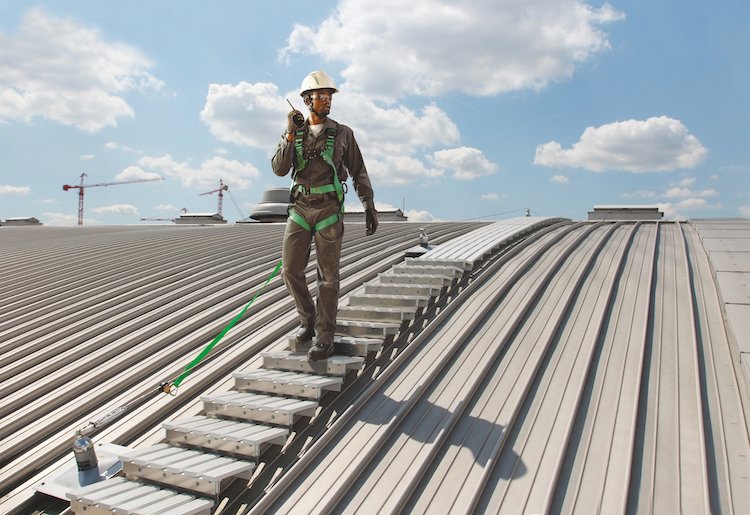Importance of Regular Fall Protection System Checks
When working from height, careful consideration needs to be taken regarding health and safety. The correct fall protection equipment needs to be used for the job at hand, but these systems need regular checks to ensure they are working effectively and not in danger of failing. Even if a safety at height specialist has installed the equipment, the installation still requires regular checks to ensure safety, such as checking for wear and tear, weathering on the integrity or fixings, or to ensure that the equipment is still suitable for purpose.
Regular fall protection systems checks are crucial for the safety of workers, and also falls under the legal requirements of working at height regulations. Here’s why these checks are so necessary.
Working at Height Regulations
The Work at Height Regulations 2005 legislation is designed to prevent death and injury caused by falls from height. These regulations apply to those in control of work at height such as a contractor or factory owner; they must ensure any job is sufficiently planned, supervised and carried out by people who are trained and know what they’re doing. This includes providing adequate working at height equipment.Less obvious working from height dangers include:
Working on a ladder or flat roof.
Risk of falling through a fragile surface.
Risk of falling into an opening in a floor or hole.
Before working from height commences, an employer must consider whether the work could be avoided if possible, and if not possible, provide the right kind of equipment to prevent a fall and minimise the distance and consequences of a fall. Employers should take note of the following guideline:
Avoid
Try to avoid working from height if possible, such as using extendable tools from ground level to remove the need for a ladder.
Prevent
If unavoidable, try to prevent a fall from occurring. You can do this by working with equipment to prevent falls such as mobile elevating work platforms and scaffolding, or by only working on safe areas such as roofs with existing protection like a guard rail edge protection.
Minimise
If a risk to fall remains, then minimise the risk as much as possible by reducing the distance or consequences of the fall. This can be achieved with a skylight safety net and safety harnesses. If ladders are needed, ensure the correct ladder is being used by a competent person.
Causes of Accidents
Fragile roofs are one of the most common causes of accidents when working from height. Working on roofs is high-risk and a common cause of workplace death and injury. As such, care needs to be taken when working with the following:
Roof lights
Liner panels on built-up sheeted roofs
Non-reinforced fibre cement sheets
Corroded metal sheets
Glass
Rotted chipboard
Slates and tiles
Employees need to ensure that fragile surfaces are avoided where reasonably possible, and if not, ensure proper support or protection is provided. Falls happen when there is inadequate safety equipment, improper training is given, or the equipment being used is faulty and not adequately maintained.
What to Check For
When running safety checks, employers should pay close attention to the equipment used to prevent and minimise the impact of falls from height. When a restraint system is being used, which typically has an anchor point and a body harness, it is not uncommon for them to become damaged and thus unfit for use. These must be regularly recertified to ensure they are safe to use. The rate at which checks should be carried out will depend on the frequency of use, and the kind of environment it is used in, but generally a visual inspection should be carried out before every use. Recertification should be done every 12 months for fall protection equipment and 6 monthly for abseil anchor equipment, carried out by a competent person.
Fall Protection from Altus Safety
Kingspan Safetraxx Horizontal Fall Arrest Track
At Altus Safety, we specialise in designing, supplying, installing and testing permanent roof access equipment and fall protection. We can offer a range of solutions including roof edge protection, roof anchor systems, roof walkways and fall arrest systems. We provide a full inspection, testing, certification and maintenance service for working from height equipment. With full UK-wide coverage, our highly skilled team of operatives will come to you to inspect your fall arrest systems to ensure they are fit for use, check correct PPE is being used and discuss any additional training needs for users.
Our Altus Safety engineers are all trained in the full range of products and manufacturers of safety equipment in the UK, so they can ensure all your equipment is fully compliant and ready to use. If repairs are needed, our team can give you a detailed report and estimate, and minor repairs can be carried out in the same visit, avoiding the need for an additional visit. If you’re looking for a company that can ensure you are adhering to all health and safety regulations when working from height, Altus Safety can help. Contact us today to find out more.



